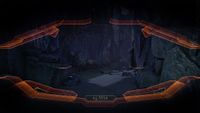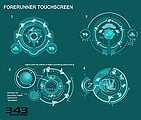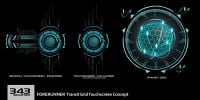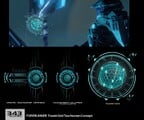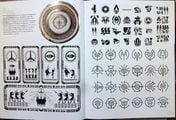Forerunner symbols: Difference between revisions
From Halopedia, the Halo wiki
Postmortem (talk | contribs) (→Scripture type: Identified as Digon in Halo: Epitaph.) |
|||
| Line 148: | Line 148: | ||
The fourth type is the scripture type. These are found on Forerunner ruins and holograms. | The fourth type is the scripture type. These are found on Forerunner ruins and holograms. | ||
There | There are three distinct sets: broad glyphs, LED-like glyphs, and circuit board-like glyphs. | ||
It is likely this was [[Digon]], an ancient Forerunner script utilized for sacred and ceremonial purposes.{{Ref/Book|Id=Epi|Halo: Epitaph|5}} | |||
<gallery> | <gallery> | ||
File:Scripture.png|Forerunner script engraved onto a stone structure with energy going though it. | File:Scripture.png|Forerunner script engraved onto a stone structure with energy going though it. | ||
Latest revision as of 00:53, November 16, 2024
| This article does not meet the wiki's general standards and/or standards on layouts. You can help by cleaning this article. |
| This article does not have enough inline citations and/or does not adhere to the proper citation format. You can help Halopedia by adding citations. |

The Forerunners used several forms of symbols and glyphs to convey a variety of meanings. These symbols can be found on Forerunner technology and within Forerunner installations, including the Halo Array. The Covenant later adopted these symbols for their writing system as well as religious imagery and as such, they are also commonly seen in Covenant technology and architecture.
Background[edit]
While the specifics of Forerunner languages such as Jagon and Digon remain a mystery, with only a handful of words known, the writing system they used to convey meaning is far better understood.
The Forerunners appear to have used two different writing methods; the first was a system of glyphs or logograms, rather than parts of an alphabet, highly contextual in nature, with the meaning of different glyphs altered by order and context, and further meaning could be derived if the reader used more three-dimensional interpretations; when combined with different glyphs, a symbol might have radically different meanings, making individual glyphs pictograms or ideograms.
The second mode seems to be a more conventional writing system, using two-dimensional characters. There appear to be at least two variations of this conventional script. One type, observed in Forerunner relics on Installation 00, either inscribed onto stone relics[1][2] or in holographic form,[3][4] involves highly complex characters resembling digital patterns or bar codes written vertically. In the other writing system, the characters are considerably simpler, consisting of a series of dots, squares, bars and triangles. The Covenant script is derived from the latter, although they use highly embellished variations of the original characters used by the Forerunners.[5]
Other symbols found on Forerunner relics and structures are even less obvious in their meanings. They are obviously decorative in nature, but they are often larger and more elaborate in nature than their glyphs, and may depict specific shapes and forms, and may have more in common with petroglyphs than logograms.
The glyph system was also adopted by the Covenant as religious symbols, despite having little idea as to the true meanings of the original symbols; the most notorious example is their mistranslation of the "Reclaimer" glyph as meaning "Reclamation". Forerunner glyphs are found on Covenant Luminaries as indicators of Forerunner relics, as the Reclaimer glyph was seen to represent humans on Harvest. Humans in general have had little success in translating Forerunner texts, with the notable exception of Dr. Catherine Halsey.[6] Indeed, it took nearly five years to decode glyphs recovered during the Battle of New Mombasa.[7]
Specific symbols[edit]
Eld[edit]
The glyph representing the Mantle of Responsibility,[8] the main belief system of the Forerunners, is perhaps the most ancient and ubiquitous Forerunner glyph. Known as the Eld or the Tree-mark due to its resemblance to a heavily stylized tree,[9] the symbol appears frequently on Forerunner structures and installations due to the Mantle's all-encompassing nature in Forerunner society.
Among many other sites, this symbol appears inside and outside Installation 04's Silent Cartographer,[10][11] as well as on Installation 05 in various areas.[12] It also appears on the Ark's surface, if viewed from space. It also makes an appearance in the Terminals throughout the Ark. The symbol also appears on top of a Monitor's "head" and behind the "eye" on the center orb. The surface of Requiem also bears the symbol,[13] and the symbol is found in a wall on Requiem, accompanied by the inscription "Guardianship for all living things lies with those whose evolution is most complete. The Mantle of Responsibility shelters all.".[8] A similar symbol was found on Installation 03 and moved to Ivanoff Station to be studied.[14]
Eld under Installation 04's Cartographer.
The Mantle symbol in the Deep-Space Anomaly#0198.
An engraving of the Mantle symbol on Installation 05.
Eld on one of the "fins" of the Babd Catha Forerunner vessel.
Shield World[edit]
Shield Worlds are represented by a symbol described as a "double-lobed icon". The symbol was described when Dr. Halsey was compiling her data with the AI Endless Summer. While Dr. Halsey was working, CPO Mendez asked her what the symbols on the screen are. Dr. Halsey replied that they are Forerunner symbols from the ruins on Onyx, and their theoretical translations. As she continued to work, Mendez then asked the meaning of a double-lobed glyph. Dr. Halsey replied that the symbol, roughly translated, means Shield World.[15]
Reclaimer[edit]
The Forerunner glyph representing a Reclaimer is identical to the Marathon symbol,[16] although the same symbol appears to have been in common use in Forerunner constructs, including the "eye" of 343 Guilty Spark, as well as the frontal section of an Enforcer. However, after Halo: Reach, later media featured a more vague appearance of the original symbol.
The original Marathon symbol is also used by humans in various instances, and it is the ship emblem of the UNSC Pillar of Autumn. It is unknown if this is simply a coincidence, or if there is a relation to their status as Reclaimers.
Defined types of circle symbols[edit]
Sigils[edit]
A sigil is a symbol representing a specific Forerunner,[17] ancilla, or any other entity. They were often used to label transmissions,[18] or to indicate affiliation with a given individual; for example, members of Master Builder Faber's personal security carried his sigil.[17]
Forerunners and ancilla have been known to change their sigils on some occasions; for example, the Ur-Didact's sigil being changed to an "unbound" state at some point after his fall from grace, and the Warden Eternal's sigil gaining a second ring.
The second avatar of AdjutantReflex on Bungie.net.
The Librarian
The Gravemind
A Guardian
The Warden Eternal's original sigil
Installation symbols[edit]
In the Ark's Citadel, where the Prophet of Truth attempted to fire the seven Installations, each Installation is shown in detail. Each Halo has its own hologram showing its structure and status, as well as a holographic symbol identifying each Installation.
If the installation's fail safe protocol is activated, when the installations are all in communication the symbols all come back as white. In the case an installation is destroyed or contact is fully lost with it, the symbol used to describe it is red as shown with Installation 04.
Beta Halo (Installation 01) symbol
Epsilon Halo (Installation 02) symbol
Gamma Halo (Installation 03) symbol
Alpha Halo (Installation 04 , Installation 08, and Installation 09) symbol
Delta Halo (Installation 05) symbol
Kappa Halo (Installation 06) symbol
Zeta Halo (Installation 07) symbol
Symbol types[edit]
The Forerunners have been currently shown to use 7 different type of writing systems. The following are shown below. These symbols can often be found in hexagons.
Rectangle type[edit]
The first type is the rectangle ones. The rectangle ones are seen in records the Forerunners have made.
Rectangle type symbols commonly have a bracket round them. Inside the brackets are small boxes. These range from 1-6 small ones, 1 to 4 medium ones, 1 to 3 medium sized ones, 1 to 2 big ones, or none at all. It has been noted that the top bracket is not always there. In that case there is either no boxes at all, or small boxes 1-6 would be inside the bracket.
Forerunner sigils are able to be used as normal characters in this.
The rectangle type symbols in a terminal with hexagon-type images.[Note 1]
Hexagon type[edit]
The second type is the hexagon type ones. The hexagon ones can appear without a hexagon around them but are more mostly seen with them around. These are seen in Forerunner signals and codes, and also control panels. Images are also known to be inside the hexagon type symbols as images in terminals.
Two possible ciphers for the hexagon symbols used in the Section 3 ARG.
A glyph used in Hunt the Signal that was used to find the Signal that led to the discovery of the Guardian sigil.
A transmission from the artifact on Sigma Octanus IV with the hexagon symbols in it.
X50's control panel with the hexagon symbols in it.
Circular type[edit]
The third type is the circular type. The circular type can be seen with being in a circular pattern and has been seen on their own. These are seen in Forerunner co-ordinates, control panels, and several Forerunner artifacts. These are often circle round a Forerunner sigil. This type was also seen in the Halo 4: Promethean Weapons Trailer, where the Promethean weapons were looked over.[19]
Forerunner sigils can be used as normal characters in this writing type.
"Assertion of control" Seen when 343 Guilty Spark contacts the UNSC Pillar of Autumn.
"Bio Scan Begin - End" Seen in a transmission in which 343 Guilty Spark lowered Installation 04's security to let the UNSC Pillar of Autumn though.
The co-ordinates to Requiem that were found on Gamma Halo. That make a almost complete alphabet. Note letters "I", "J", "K", "L" don't appear.
"Techlink Established Forerunner" on one of the Requiem slipspace artifacts.
Eld inscription on the Z-130 Suppressor Refractive skin
Scripture type[edit]
The fourth type is the scripture type. These are found on Forerunner ruins and holograms.
There are three distinct sets: broad glyphs, LED-like glyphs, and circuit board-like glyphs.
It is likely this was Digon, an ancient Forerunner script utilized for sacred and ceremonial purposes.[20]
Planet type[edit]
The fifth type is the planet type. These are only found on planet records.
Line type[edit]
The sixth type is the line type. These are seen on Forerunner control panels and co-ordinate.
Small line type[edit]
The seventh type has only appeared in the stone object found at Côte d'Azur Museum of Natural History. This type is known to transmit hexagon type symbols out of it.
Symbols that appear in Sadie's Story.
Round symbol analysis[edit]
The symbols are primarily composed of circles and curves. Each glyph appears to use a circle as a base shape, often combined with either a concentric circle or fragments of one. Another common trait is the presence of one or more circular arcs whose osculating circles' centers lie on the base circle. Non-circular arcs and small non-concentric circles can be seen on some glyphs. The filling in of areas is uncommon but has been seen in Forerunner glyphs.
According to Bungie employee Joseph Staten, the blue and red signs denote the safety of the area — that is, whether or not the Flood are present.[verification needed] However, this has only been noted when there are two red symbols together. As singular red symbols can mean something else as noted by them appearing in numerous locations on Installation 04 not linked to the Flood.
Several of the symbols are variations of each other, or simply rotated versions of one.
Installation 04 symbols[edit]
Symbols that appear on Installation 04's Cartographer.
These symbols are seen on Installation 04's control room.
Glyph patterns seen in one of Installation 04's Flood containment facilities.
Line Installation glyphs[edit]
These symbols appeared throughout Line installations, specifically Line Installation 1-4:
Domain glyphs[edit]
In several places linked to the Domain several glyphs appear after Fireteam Osiris activate a console in them. Currently glyphs of this type have appeared on Kamchatka and Genesis. The following glyphs and sigils have appeared.
Iris-like glyphs[edit]
These Forerunner symbols are featured on some installations, and also used as a key to open doors in Trove.
The avatar of AdjutantReflex on Bungie.net.
The glyphs discovered in Iris.
The Iris symbol N'chala saw and carved on Earth.
A glyph in Cortana's eye.
Other symbols[edit]
These are symbols seen throughout Forerunner locations.
Glyphs seen in the Bestiarum and Halo 3 manuals.
Glyph seen on page 24 of the Halo 3 manual
Wall symbols[edit]
Around several Halo installations and Forerunner relics there are numerous murals and symbols on walls.
A mural engraved in a wall on Installation 05. A similar mural was present in Installation 04's Silent Cartographer.
Murals seen on the Halo 3 map Sandtrap.
External uses[edit]
REQ Emblems[edit]
In Halo 5: Guardians, numerous Forerunner symbols are applied into REQ card emblems.
Covenant uses[edit]
The Covenant have adapted many Forerunner symbols to their own uses. Some uses include putting the symbols on armor and weaponry.
External[edit]
Covenant Forerunner symbols as seen on Halo2.com.
Sangheili speech represented by Forerunner glyphs.
Symbol pattern used by the Covenant for Harvest.
The Glyph of Faith carved on the surface of Kholo.
Two Forerunner type glyphs appearing on a Covenant communication node.
Armor[edit]
The non-glowing cyan symbol is found on the back of Stealth Sangheili and Sangheili Zealots.
Sangheili Minor harnesses emblazoned with Forerunner glyphs.
Symbol used on the Prophets' anti-gravity chairs.
Weapons and vehicles[edit]
Green Anskum-pattern plasma grenade symbol in Halo CE.
Symbol that appears on the Ru'swum-pattern Phantom in Halo Reach.
A symbol that appears in the inner-workings of the Kig-Yar point defense gauntlet that closely resembles that of the Iris artifact glyphs.
Green Anskum-pattern plasma grenade symbol projecting the symbol for Installation 04.
Circular glyph seen near the handle of a Pek-pattern plasma cannon in Halo Reach.
Graffiti[edit]
Covenant Huragok have during the Battle of Mombasa been noted to graffiti Forerunner symbols on the walls of New Mombasa. Some of the symbols depict the New Mombasa Superintendent's avatar along side the Forerunner symbols. The symbols were first seen in the Halo 3 ViDoc trailers and during gameplay as the symbol for the Regenerator.
Unknown origin[edit]
The following glyphs are used in several locations, but it is unknown who put them there.
Hand-drawn glyphs on the map Warlord.
Development gallery[edit]
Cut symbols in the Halo Combat Evolved Anniversary Terminals.[21]
Trivia[edit]
The base numerical glyph was used as an avatar by AdjutantReflex.[22]
List of appearances[edit]
- Halo: The Fall of Reach (First appearance)
- Halo: Combat Evolved
- Halo: The Flood
- Halo: First Strike
- Halo 2
- Halo Graphic Novel
- Halo: Ghosts of Onyx
- Iris
- Halo 3
- Halo: Contact Harvest
- Halo: Reach
- Halo: Combat Evolved Anniversary
- Halo 4
- Halo: Escalation
- Halo 2: Anniversary
- Halo: Spartan Strike
- Halo 5: Guardians
Notes[edit]
- ^ The Rectangle type symbols in the Halo 3 terminals are all random and do not go towards any specific letter or number. This can be assumed that the terminal is struggling to translate the English words, giving an error with the wrong symbols popping up.
Sources[edit]
- ^ Halo 3, multiplayer map, Sandtrap
- ^ Halo 3, multiplayer map, Sandbox
- ^ Halo 3, multiplayer map, Epitaph
- ^ Halo 3, multiplayer map, Construct
- ^ Halo: First Strike, page 197
- ^ Halo: Ghosts of Onyx
- ^ Halo: Spartan Strike, Operation E: Brother’s Keeper
- ^ a b Halo 4, campaign level, Requiem
- ^ Halo: Silentium, page 142-143
- ^ Halo: Combat Evolved, campaign level, The Silent Cartographer
- ^ Halo: Combat Evolved Anniversary, campaign level, The Silent Cartographer
- ^ Halo 2
- ^ Halo 3, Epilogue
- ^ Halo 4, campaign level, Composer
- ^ Halo: Ghosts of Onyx, page 181
- ^ Halo: Contact Harvest
- ^ a b Halo: Silentium, page 85
- ^ Halo 3, Terminals
- ^ Halo 4: Promethean Weapons Trailer
- ^ Halo: Epitaph, chapter 5
- ^ YouTube: BTS: Anniversary Terminals
- ^ Iris
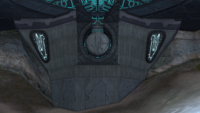

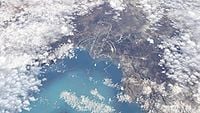
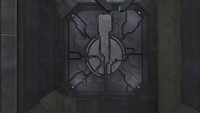
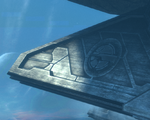
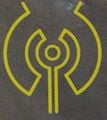

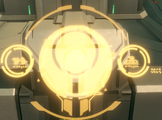


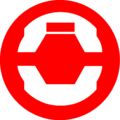


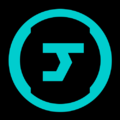
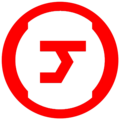
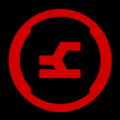


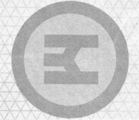









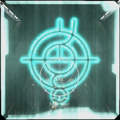
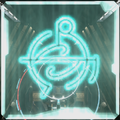
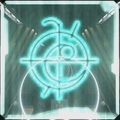
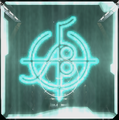
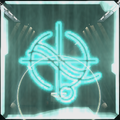
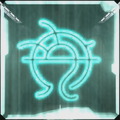
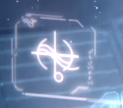

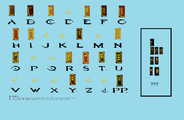
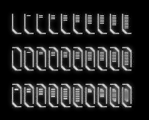
![The rectangle type symbols in a terminal with hexagon-type images.[Note 1]](https://halo.wiki.gallery/images/thumb/4/42/H3_Terminal_Error.png/200px-H3_Terminal_Error.png)
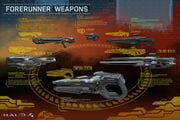


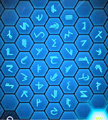
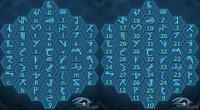
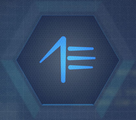



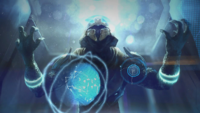
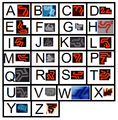
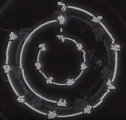
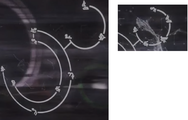
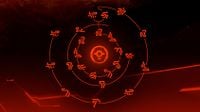


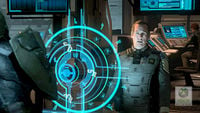

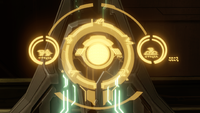
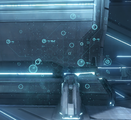
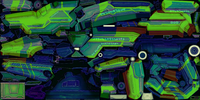


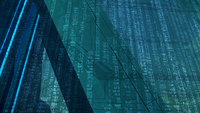


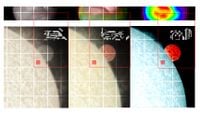



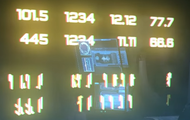

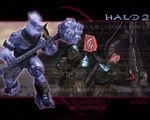
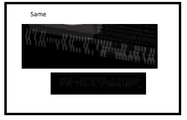
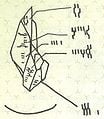
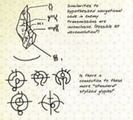
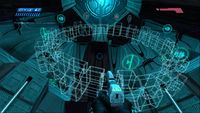



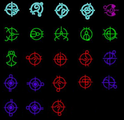


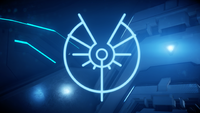
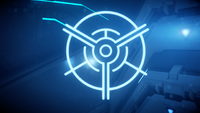
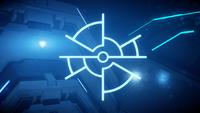
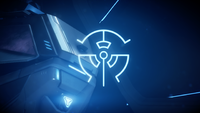
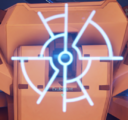
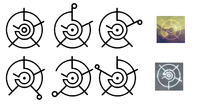

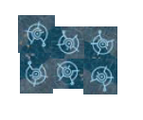

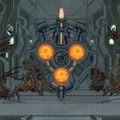
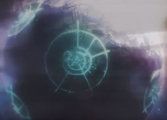
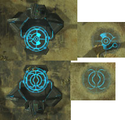
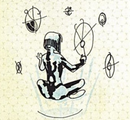

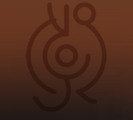
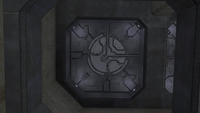





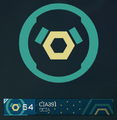
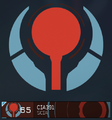

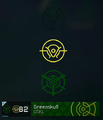
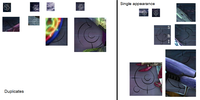

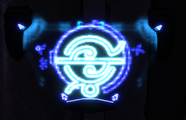


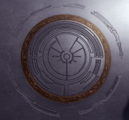
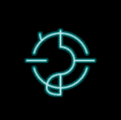
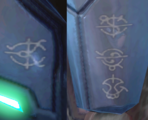
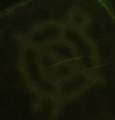

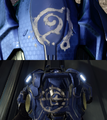

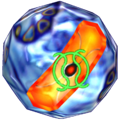
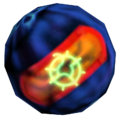
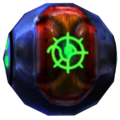
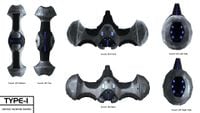
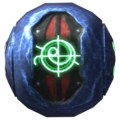
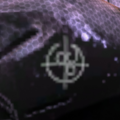

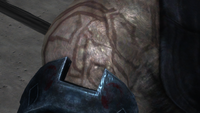
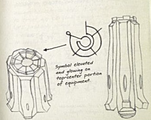

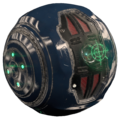
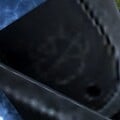
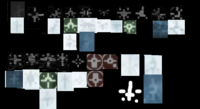
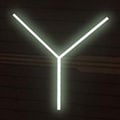
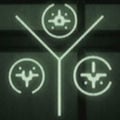
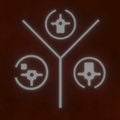
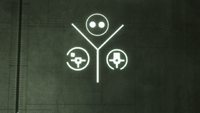
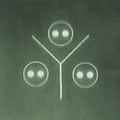

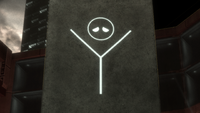
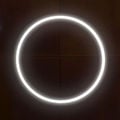
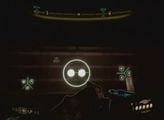
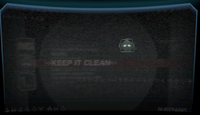
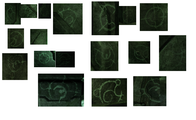
![Cut symbols in the Halo Combat Evolved Anniversary Terminals.[21]](https://halo.wiki.gallery/images/thumb/0/02/Forerunner_Terminals_Glyphs.jpg/200px-Forerunner_Terminals_Glyphs.jpg)
